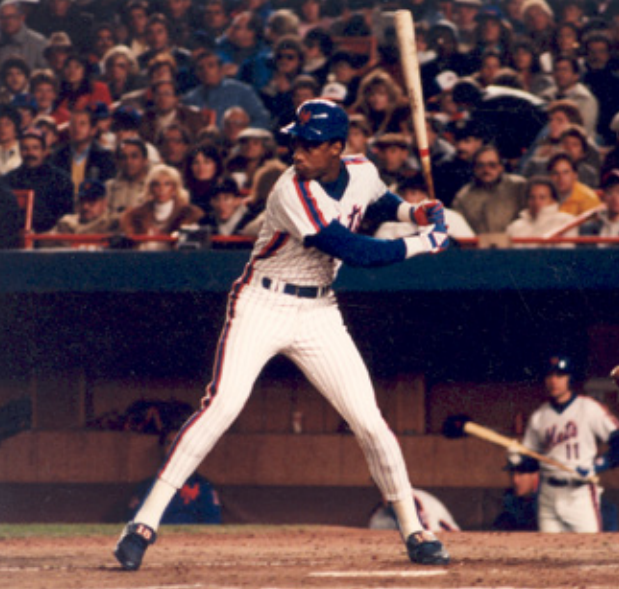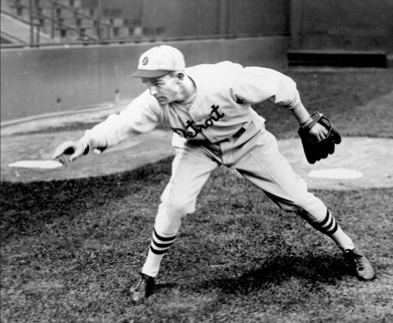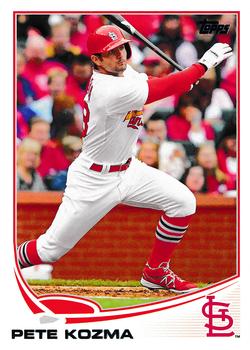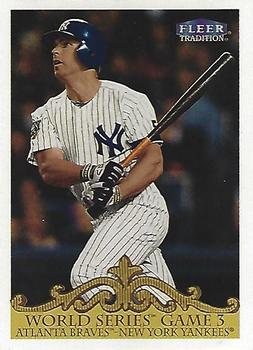October 7, 1964: Schultz, Cardinals ignore the odds to defeat Yankees in Game 1
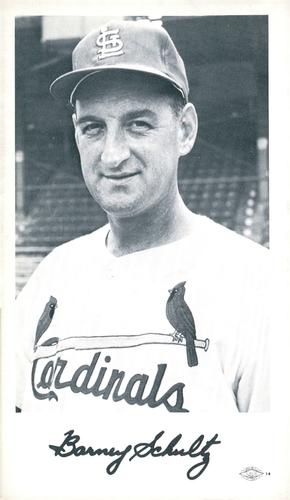 The city of St. Louis was ecstatic that it would get to host at least two games of the 61st World Series during its bicentennial year. In addition to thrusting the Midwestern metropolis itself into the spotlight, “two sons of St. Louis,” Johnny Keane and Yogi Berra, were managing the Cardinals and New York Yankees respectively.1 The only negative aspect of the matchup was that the Yankees, playing in their fifth consecutive World Series and ninth in the past 10 years, were favored by the Las Vegas odds makers to win their 21st championship.2
The city of St. Louis was ecstatic that it would get to host at least two games of the 61st World Series during its bicentennial year. In addition to thrusting the Midwestern metropolis itself into the spotlight, “two sons of St. Louis,” Johnny Keane and Yogi Berra, were managing the Cardinals and New York Yankees respectively.1 The only negative aspect of the matchup was that the Yankees, playing in their fifth consecutive World Series and ninth in the past 10 years, were favored by the Las Vegas odds makers to win their 21st championship.2
The Yankees and Cardinals had met four times previously in the World Series, with St. Louis prevailing in 1926 and 1942 and New York taking the title in 1928 and 1943. The Cardinals were set to move into new Busch Memorial Stadium early in the 1966 season; thus, barring another Cardinals World Series appearance in 1965, there was a strong chance that the 1964 fall classic would be the last hurrah for venerable old Sportsman’s Park.
The facility had the character of “a pleasant stadium, in the Norman Rockwell genre” and, for fans, “the feeling in the park [was] one of inclusion, of being in a whole of which the diamond is only a focal part.”3 After the venue passed into the hands of August “Gussie” Busch Jr., who had purchased the Cardinals franchise in 1953, it had been renamed Busch Stadium, but the new name had never caught on with the hometown fans.4
Whatever the preferred name of the ballpark, 30,805 fans filled it for Game One on October 7, 1964. The Yankees sent left-hander Whitey Ford to the mound for the opener. Ford was making his 22nd start in 11 World Series and already had six titles and a record 10 postseason victories to his name. St. Louis countered with Ray Sadecki, who had posted a 20-11 record during the season, in lieu of ace Bob Gibson, who was unavailable after pitching 12 innings in the Cardinals’ final series against the New York Mets.
Sadecki held the Yankees in check in the top of the first and was staked to a 1-0 lead in the bottom of the frame. Lou Brock lined a one-out single to right field, used his speed to advance to third on Dick Groat’s single to center, and scored on Ken Boyer’s sacrifice fly. Third baseman Boyer no doubt was happy to draw first blood against the Yankees and his brother, Clete, who manned the hot corner for the New Yorkers.
The Yankees wasted no time in erasing their deficit. Elston Howard opened the top of the second with a single, and then Tom Tresh smashed a homer to deep left-center field for a 2-1 Yankees advantage. Clete Boyer, looking to do Ken one better, lashed a one-out single, stole second base, and scored on Ford’s single to extend the lead to 3-1. Sadecki walked Phil Linz, who was playing shortstop in place of the injured Tony Kubek, then was fortunate to catch a break when Ford tried to score from second on Bobby Richardson’s single to left field. Brock fired a perfect throw to catcher Tim McCarver to cut down Ford at home plate, and Sadecki struck out Roger Maris to end the inning.
After surrendering three runs, Sadecki sought to help his cause with his bat. Mike Shannon led off with a single and advanced to second on Dal Maxvill’s one-out comebacker to Ford. Sadecki drove in Shannon with a base hit to right field to narrow the score to 3-2 and advanced to third base on Mickey Mantle’s errant throw to home; however, he was stranded there when Curt Flood’s grounder to Linz resulted in the third out.
After the early excitement, the third inning was uneventful as each pitcher worked around a walk. Sadecki also issued a two-out walk in the fourth but escaped without further adventure. In the bottom of the fourth, Ford, in what would be his final World Series appearance, gave a demonstration of his postseason acumen. After McCarver blasted a one-out triple to the right-center-field gap between Mantle and Maris, Ford struck out Maxvill and Sadecki to strand McCarver at third base.
Not only had the Cardinals missed the opportunity to tie the score, but they then saw the Yankees extend their advantage in the top of the fifth. Mantle lashed a two-out single and advanced to third on Howard’s second base hit of the game, after which Tresh garnered his third RBI with a double that drove in Mantle for a 4-2 lead.
Ford cruised through the bottom of the fifth. However, after Sadecki held the Yanks scoreless in the top of the sixth, Ford encountered trouble. Ken Boyer led off with a single and advanced to second on a passed ball. After Bill White struck out, Shannon mashed one of the longest home runs in the history of Sportsman’s Park to tie the score, 4-4; aided by a 16-mph southeast wind, the ball was estimated to have traveled between 475 and 500 feet before it hit the scoreboard past the left-field bleachers.5 McCarver followed Shannon’s blast with a double that ended Ford’s day.
Al Downing took the mound and induced a pop fly from pinch-hitter Charlie James. Carl Warwick, batting in place of Sadecki, singled to score McCarver with the go-ahead run and advanced to second on Tresh’s throw to home. After Julian Javier entered the game to pinch-run for Warwick, Flood hit the second wind-assisted drive to the left-field-bleacher area, only his ball bounced off the fence for a triple rather than clearing it altogether; Javier scored on the play to give the Cardinals a 6-4 lead. Downing retired Brock to stop the bleeding, but the game had turned in the Redbirds’ favor.
Keane now sent 38-year-old Barney Schultz to the hill to face the heart of the Yankees’ order in the top of the seventh inning. Schultz was an unlikely hero, since he had pitched for 18 different franchises in 13 different leagues — counting major- and minor-league stints — over the past 20 seasons. After developing arm trouble early in his career, he had come to depend upon the knuckleball, but he had found success at the major-league level to be elusive.
What Schultz had found was the support of manager Johnny Keane. Schultz first came under Keane’s leadership while he was with the Columbus Red Birds in 1954, and they were reunited on the Omaha Cardinals in 1956-58. Schultz appreciated Keane’s role in his career, saying, “He’s the one who made me a relief pitcher. He’s the one who had faith in me. He’s done more for me than any other man in baseball.”6
In 1963, with a shot at the NL pennant, Keane persuaded general manager Bing Devine to trade for Schultz. Though Schultz was released after the season, he worked out at the Cardinals’ spring-training camp in 1964 and was assigned to the Triple-A Jacksonville Suns. The Cardinals called him up at the end of July, and he contributed a 1-3 record with 14 saves and a 1.64 ERA over 30 appearances down the stretch.
Schultz rewarded Keane’s confidence in him by allowing the Yankees only one run over the final three innings. In the top of the eighth, pinch-hitter Johnny Blanchard hit a one-out double, and pinch-runner Mike Hegan scored on a two-out single by Richardson to draw the Yankees to within one run of the Cardinals.
St. Louis responded in the bottom of the inning by putting the game away with three unearned runs off relievers Rollie Sheldon and Pete Mikkelsen. Shannon, the leadoff batter, reached base on a Clete Boyer error. Sheldon walked McCarver but got Schultz to line into a double play; after he intentionally walked pinch-hitter Bob Skinner, he gave way to Mikkelsen. Flood greeted the new Yankees pitcher with a single that plated Shannon, and Brock followed with a double that drove in pinch-runner Jerry Buchek and Flood for a 9-5 lead.
After the scoring outburst, Schultz earned a save as he set the Yankees down in order to preserve the Cardinals’ Game One victory.
This article appears in “Sportsman’s Park in St. Louis: Home of the Browns and Cardinals at Grand and Dodier” (SABR, 2017), edited by Gregory H. Wolf. Click here to read more articles from this book online.
Sources
In addition to the sources listed in the Notes, the author also consulted Baseball-Reference.com and The Sporting News.
Notes
1 Joseph Durso, “Yanks, with Kubek Out, 7-5 to Top Cards in Opener Today,” New York Times, October 7, 1964: 59.
2 Ibid.
3 “Fans Hail Cards with Propriety,” New York Times, October 8, 1964: 55.
4 Gussie Busch had a penchant for attaching his family’s name to various arenas. In addition to renaming Sportsman’s Park, he also changed the name of Houston’s Buffalo Stadium — home of the Cardinals’ longtime minor-league affiliate, the Buffaloes — to Busch Stadium in 1958. In both cities, most fans continued to refer to the structures by their old names. Busch finally obtained ego gratification via stadium name with the opening of Busch Memorial Stadium (a.k.a. Busch Stadium II) in 1966.
5 Joseph Durso, “Cards Rally to Beat Yanks in Series Opener, 9 to 5,” New York Times, October 8, 1964: 1.
6 “Schultz Is Cardinal Hero With Three Innings of Effective Relief Pitching,” New York Times, October 8, 1964: 54.
Additional Stats
St. Louis Cardinals 9
New York Yankees 5
Game 1, WS
Busch Stadium
St. Louis, MO
Box Score + PBP:
Corrections? Additions?
If you can help us improve this game story, contact us.


